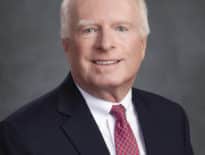Peter Forman
President and CEO, South Shore Chamber of Commerce
Age: 61
Experience: 20 years
The South Shore Chamber of Commerce has developed an ambitious plan to make the area more competitive and build a stronger economy. South Shore 2030: Choosing Our Future is a comprehensive agenda to preserve the quality of life on the South Shore, promote future economic growth for everyone and lure new talent to the region. Executed by business leaders through the South Shore Chamber of Commerce and South Shore Economic Development Corporation, there are a range of strategies to bring this vision to fruition. Chief among them is housing, with the plan hoping to spur the creation of 44,000 new homes by 2030.
Leading the chamber’s efforts is President and CEO Peter Forman, who has been with the chamber for 14 years. Prior to his current role, Forman spent over 20 years in government as a member of the Massachusetts House of Representatives, sheriff of Plymouth County, undersecretary of administration and finance under former Gov. Paul Cellucci and chief of staff to former Gov. Jane Swift. Forman said he enjoys his position with the chamber because it is a great opportunity to help bridge small business needs and government and regional economic development.
Q: How would you describe the South Shore housing market right now?
A: The South Shore market is strong and getting stronger. The strength is less about rising prices and more about increasing the mix of housing product to respond to market demands. We are expanding the housing options to include more condominiums, apartments, mixed-use designs and smaller-lot cluster developments. That helps attract more people to the region, particularly younger people.
Q: The South Shore 2030 Plan wants to make the South Shore more competitive. What is the area lacking? Who are you trying to compete with? Boston?
A: Our South Shore 2030 Plan aims to build a stronger more diverse economic base. We want to expand the range of business sectors represented on the South Shore so residents have more choices of good jobs with shorter commutes. In one sense we compete against ourselves to think about the future rather than the past. Geographically, we are competing first with other Metro Boston suburbs. But collectively, all of Greater Boston and Massachusetts is competing with other parts of the country that are attracting younger workers and new businesses. By making our region stronger we help strengthen the economy of Metro Boston.
Q: The plan calls for 44,000 new homes by 2030. How did the chamber arrive at that number?
A: The housing goal came through an analysis by the Metropolitan Area Planning Council, the Massachusetts Housing Partnership and some other housing experts looking at housing supply and economic growth. Our Housing Task Force focused more on the type of housing. New, single-family 1-acre home lots add some talent to the area. However, [smaller] housing options that younger people and downsizing boomers want will create an even stronger draw for talent pool and bring more businesses to the area. It’s all about thinking of housing as an economic strategy more than shelter.
Q: How do you plan to get to 44,000?
A: The number will be reached by many projects, mostly small projects, spread throughout 25 communities. We contribute to that by supporting and speaking up for individual projects, town by town, and supporting local initiatives and zoning to encourage housing as an economic development strategy. Examples of the types of projects we have endorsed and support can be seen at our website southshore2030.com. Ultimately, the way we will change our housing supply will come by changing attitudes. We are actively engaging business leaders to become better informed about the connection between housing and our region’s economic future.
Forman’s Five Favorite Facts About the Pilgrims:
- One of the first Native Americans the Pilgrims encountered spoke fluent English.
- The first street was known simply as “The Streete.” There was only the one so no reason to distinguish from a second street.
- After 400 years there are an estimated 35 million Pilgrim descendants, from the 57 original Mayflower passengers.
- It only took 10 years from the start of Plymouth Colony for the first murder and criminal execution to occur.
- The First Thanksgiving lasted three days and there were twice as many Native Americans as Pilgrims who joined the harvest celebration.




 |
| 


